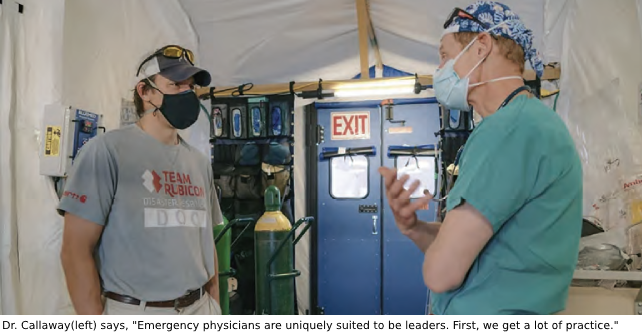
Look, my wife euphemistically says I have a “healthy distaste for the status quo.” That is shorthand for being a pain in the butt. But I find crisis response is the ultimate time for innovation—the barriers are down. I’m an optimist; I think that whatever we are doing, we can do it better.
Explore This Issue
ACEP Now: Vol 43 – No 07 – July 2024Dr. Terry: Climate change is interesting because there are a fair amount of people who struggle to see it as a physician’s priority. Let’s talk about some of these big challenges.
Dr. Callaway: I see two existential threats to humanity—artificial intelligence and climate change. We don’t have a full grasp on how either will impact humanity. But we know they are both complex systems that likely have irreversible tipping points.
Let’s talk about climate change. The World Health Organization calls climate change the top public health threat of the 21st century and the World Economic Forum identifies it as contributing to five of the Top 10 socioeconomic threats of the next decade.
Climate change is real. It is here. And it is impacting our patients, our communities, and the foundations of health and health care across the globe. Canadian wildfires triggering increased ED visits for COPD in Milwaukee, patients displaced from worsening hurricanes in my state of North Carolina, and extreme heat exacerbating housing instability because of increased utility bills. This all lands in our waiting rooms and ambulance bays.
Problems like climate change—or AI or firearm violence—are complex systems challenges that are high stakes and often have accelerating decision timelines. These are exactly the kind of challenges that emergency physicians are trained to address.
Pages: 1 2 3 | Single Page





No Responses to “This Emergency Physician Leads Next Generation Through Service”